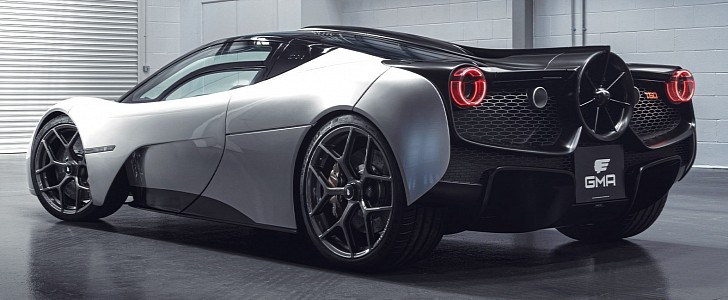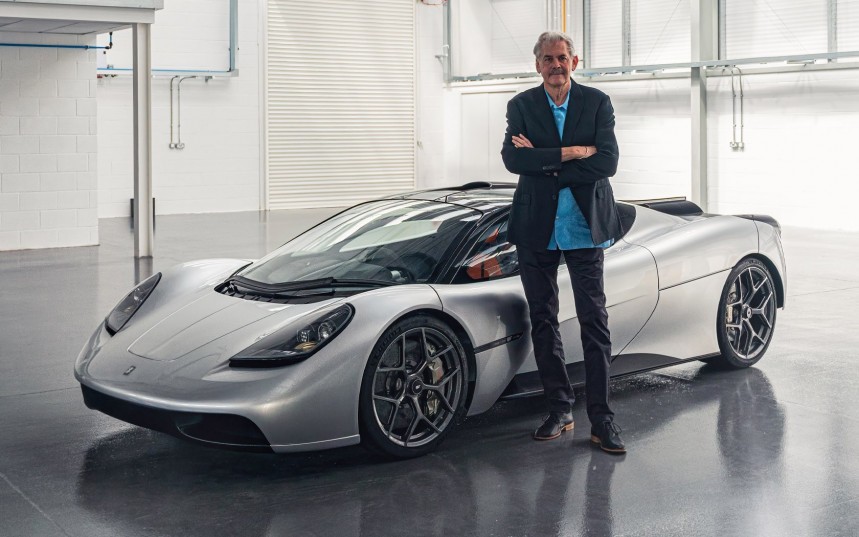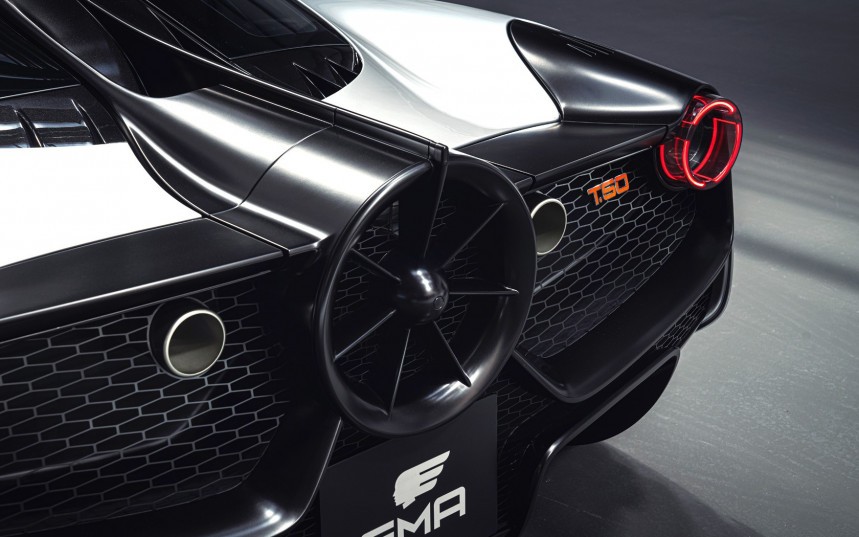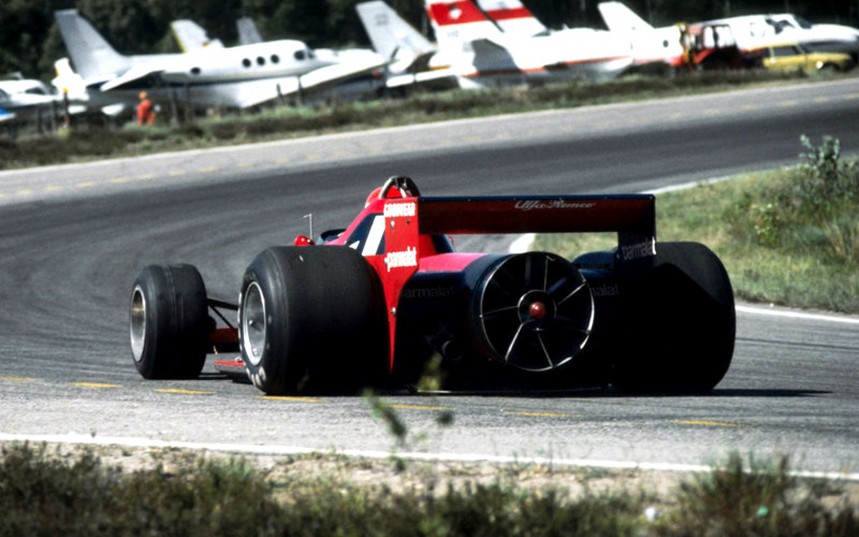Not long ago, legendary automotive designer Gordon Murray revealed the T.50, a mind-blowing supercar that he conceived as the spiritual successor of the iconic McLaren F1. It instantly gained millions of fans, but the biggest one sits on the vehicle’s rear and dramatically improves its aerodynamics.
After nearly thirty years since he designed the McLaren F1, Murray, now aged 74, decided to create a 21-century successor under his own brand, stating that it would be the last analog supercar he will create.
Although many were skeptical at first, when detailed images and specifications were released a few months ago, it became clear that the South African was serious.
At first glance, T.50 is a marvel of automotive engineering, combining a good old fashioned naturally aspirated 654 hp V12 powertrain with the latest technological advancements in the industry.
It’s faster, lighter, a lot more efficient, and although it doesn’t feature McLaren badges, the similarities to the 90’s supercar are obvious. However, one feature that sets it apart from its spiritual predecessor is the massive rear fan that resembles a fighter plane’s jet engine.
As Murray himself explains to Dario Franchitti in the latest episode of the T.50 vlog, this device has an important role in the car’s aerodynamics.
Whether they're road-legal or purely track-focused, extremely fast cars use rear wings, massive diffusers, and a series of vents to improve downforce and maintain high speeds through corners without losing grip.
The problem is that even with the most aerodynamically efficient diffusers and rear wings, tiny airflow vortexes are created at the rear of the car, limiting the amount of downforce that the vehicle can generate.
Murray’s answer to this is a very steep diffuser placed underneath the car that should dramatically improve downforce. However, this design generates substantial turbulent or semi-stalled air passing over the diffuser, which in turn creates drag.
The solution to this problem is the 16-inch (40 cm) fan which draws all that turbulent air from the diffuser through a duct and out the rear of the car, exponentially improving airflow and eliminating any vortexes.
Powered by a 48-volt electric motor and operating at a speed of up to 7,000 rpm, the lightweight carbon-fiber fan also eliminates the need for huge wings or rear diffusers. Thus, it enables a sleek body design while still making the T.50 one of the most aerodynamically efficient supercars ever created.
While such a complex fan is a first for a road-legal supercar, the design is not new. A similar device was used on the Brabham BT46B Formula One car in the 1978 season.
Also designed by Gordon Murray, it was so efficient that Bernie Ecclestone, the team's owner at the time, was forced to withdraw the car from the competition after winning the Swedish Grand Prix due to intense pressure from rival teams. The regulations were also modified that year, banning the use of such devices.
More than forty years later, the revolutionary GMA T.50 is set to revive this innovative aerodynamical feature and make it available in 100 units, each costing around $3.2 million. Production will start in the first part of 2022 and all the cars have already been sold.
Twenty-five units of a track-oriented version dubbed the T.50s will also be built and sold for around $4.3 million. They will be faster, lighter, and even more aerodynamically efficient than the road-legal version.
Although many were skeptical at first, when detailed images and specifications were released a few months ago, it became clear that the South African was serious.
At first glance, T.50 is a marvel of automotive engineering, combining a good old fashioned naturally aspirated 654 hp V12 powertrain with the latest technological advancements in the industry.
It’s faster, lighter, a lot more efficient, and although it doesn’t feature McLaren badges, the similarities to the 90’s supercar are obvious. However, one feature that sets it apart from its spiritual predecessor is the massive rear fan that resembles a fighter plane’s jet engine.
As Murray himself explains to Dario Franchitti in the latest episode of the T.50 vlog, this device has an important role in the car’s aerodynamics.
The problem is that even with the most aerodynamically efficient diffusers and rear wings, tiny airflow vortexes are created at the rear of the car, limiting the amount of downforce that the vehicle can generate.
Murray’s answer to this is a very steep diffuser placed underneath the car that should dramatically improve downforce. However, this design generates substantial turbulent or semi-stalled air passing over the diffuser, which in turn creates drag.
Powered by a 48-volt electric motor and operating at a speed of up to 7,000 rpm, the lightweight carbon-fiber fan also eliminates the need for huge wings or rear diffusers. Thus, it enables a sleek body design while still making the T.50 one of the most aerodynamically efficient supercars ever created.
While such a complex fan is a first for a road-legal supercar, the design is not new. A similar device was used on the Brabham BT46B Formula One car in the 1978 season.
More than forty years later, the revolutionary GMA T.50 is set to revive this innovative aerodynamical feature and make it available in 100 units, each costing around $3.2 million. Production will start in the first part of 2022 and all the cars have already been sold.
Twenty-five units of a track-oriented version dubbed the T.50s will also be built and sold for around $4.3 million. They will be faster, lighter, and even more aerodynamically efficient than the road-legal version.














